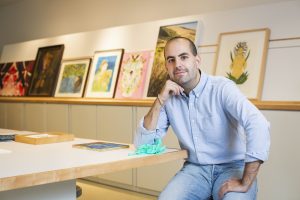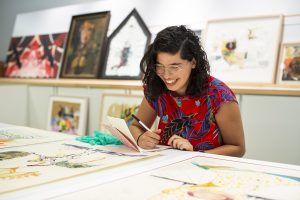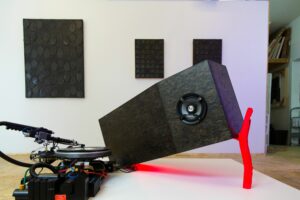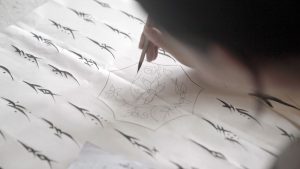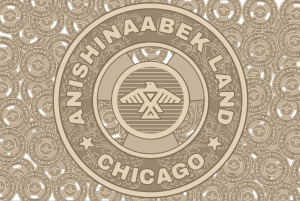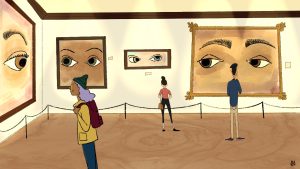All artists graduating from institutions experience the anxiety and fear of what comes next, entering “the real world” and trying to figure out a lucrative career path (in a not so lucrative field). However, most artists have the option to work outside of their field of study. This is not the case for international artists (F-1 Students) who have one year to find employment in a relevant position under Optional Practical Training (OPT). Following a single year of work, foreign artists are expected to gain enough professional experience to submit a work visa to stay and work in the United States. Moreover, most international students pay 2 to 3 times more tuition compared to domestic students.
Chicago-based Vietnamese artist My Linh Mac (Millie) is intimately familiar with the challenges following F-1 Status: the immediate search for employment and visa sponsorship, visa application fees, lawyer fees, the pressure to demonstrate her value as a foreign worker within the United States – the list goes on. Mac is originally from Vietnam and pursued an education in Singapore, Australia, and the United States. Mac received her Bachelor of Art in Digital Media & Painting from Valparaiso University, her Masters in Art Education from the School of the Art Institute of Chicago (SAIC), and her Masters in Entrepreneurship for Creatives from Columbia College of Chicago.
Before moving to Chicago in 2016, Mac spent over three years working at Valparaiso University’s Office of International Student Affairs. Over the years, she witnessed many international students struggling to find employment opportunities that granted them legal immigration status. This inspired her thesis OPEN DOORS FOR INTERNATIONAL ARTISTS: LIFE AFTER F-1.
Art education courses taught Mac about the importance of establishing an inclusive learning environment. Yet, she could not help but wonder what ‘inclusivity’ and ‘equality in the classroom meant for students who have passports of a different color. In six years of higher education in the U.S., the topic of “life after school for international students” was hardly mentioned in any curriculum or classroom setting. This observation led Mac to conduct surveys on international art students. Her survey focused on the difficulties and stressors of F-1 students applying for visa sponsorships following a single year of Optional Practical Training (OPT).
Lauren Iacoponi helped in the consolidation of My Linh Mac’s thesis research to present this information. Read My Linh Mac’s full thesis in the SAIC Digital Collections, here.
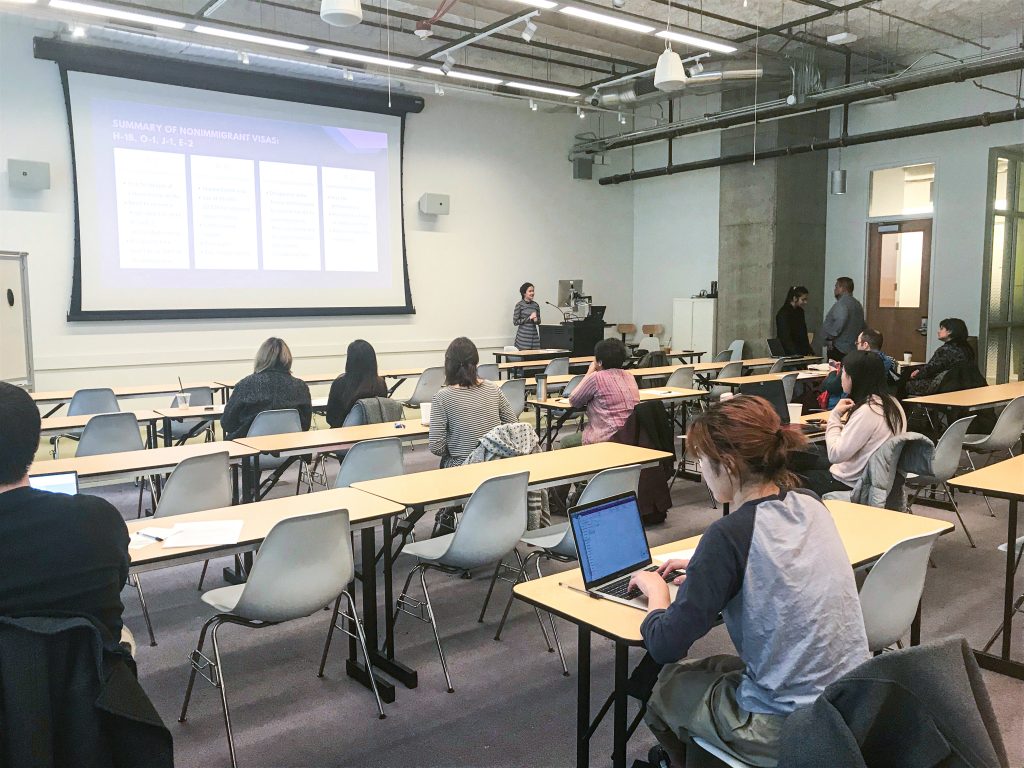
Objectives
- Provide information and narrative on the struggle of F-1 artists hoping to build a career in the U.S.
- Help international artists applying for O-1 and other employment visas.
- Help institutions to better aid international students in building a career after F-1 status.
- Share resources with international students in the U.S.
- Improve understanding about the current non-immigration and employment visas in the U.S.
- Inform domestic artists of the process of filing for an O-1 Visa.
- Advocate for more opportunities for F-1 artists.
Resources
- Lawyers for the Creative Arts (LCA) (Subscribe to the newsletter)
- Julie Emerick, Immigration Attorney (Speaker at Mac’s Life After F-1 workshop)
- Anna Radke, Immigration Attorney (Speaker at Mac’s Life After F-1 workshop)
- Office of International Student Affairs (SAIC Specific)
- Text: How to Secure Your H1-B Visa by James Bach and Robert Werner
- Podcast: Hashing Out the Law, Episode 7: Biden & Immigration
- Artwork Archive (Helpful to find international open calls)
- The-Dots (Networking and art opportunities)
- C4E (Open calls for art)
- Chicago Artists Resource (Open calls for art)
Research Overview
Mac’s thesis at SAIC, OPEN DOORS FOR INTERNATIONAL ARTISTS: LIFE AFTER F-1, focuses on life after art school for international students who are seeking legal employment opportunities in the U.S after receiving higher education under F-1 visa status. Her research draws on recent immigration/visa policies and addresses student’s psychological pressure/fear of not getting a job after leaving art institutions. Mac developed and conducted workshops in 2019 that incorporated information from immigration attorneys and international alumni. The workshops were piloted at SAIC under the supervision and in partnership with International Student Affairs director Lawrence Rodriquez.
I want to note that 100 percent of the F-1 artists who attended Mac’s workshop surveyed in favor of the workshop being taught on campus every semester. 70 percent strongly agreed that the overall structure of the workshop was effective, and 80 percent thought the resources brought into the workshop were useful and relevant to their interests.
Mac’s survey concluded with a request for written suggestions, several students suggested that the workshop should be expanded as a course that would meet several times throughout each semester. Meanwhile, the majority wanted the workshop to run longer. All of the students in attendance requested that the institution provide services and resources on immigration policies and guidance through different visa options.
Through the course of her research, Mac discovered that there is a need for institutions of higher learning to 1) Meet the needs and understand the challenges and disadvantages international students have compared to their domestic peers; 2) Provide services for international students, including the resources on government policy and 3) Establish greater connections and follow up with international alumni.
It is challenging for young international art graduates to obtain a work visa in the United States, especially with the restrictions and requirements for H-1B and O visas. It takes time (even years) to prove their ‘extraordinary’ quality. The decision to grant O visas to artists heavily depends on the applicant’s evidence of ‘extraordinary’ ability in a creative field. This is very challenging for an immigration attorney to provide evidence of the artist’s qualification for employment visa status. The process of providing proof is even more complicated with non-commercial creative practices, as petitioners may require endorsement from specific experts in the field.
Another concern about the subjectivity in art practices is the lack of transparency of the O-visa qualification standards. With no specific uniform guideline on the evidentiary criteria, further delay on the application process becomes unavoidable; because both the immigration attorney and the artist have to invest more time and resources to navigate the process.
As one of the world’s most prestigious art schools, SAIC has a large international student population both in its undergraduate and graduate degrees, and post-baccalaureate certificate programs.
Mac’s thesis shines a light on the disadvantages of international students and appeals to our institutions and creative communities to give guidance and visa-sponsored opportunities to alumni. A course designed for international students would benefit schools such as SAIC with large international student populations, while also creating greater awareness and visibility of these issues.
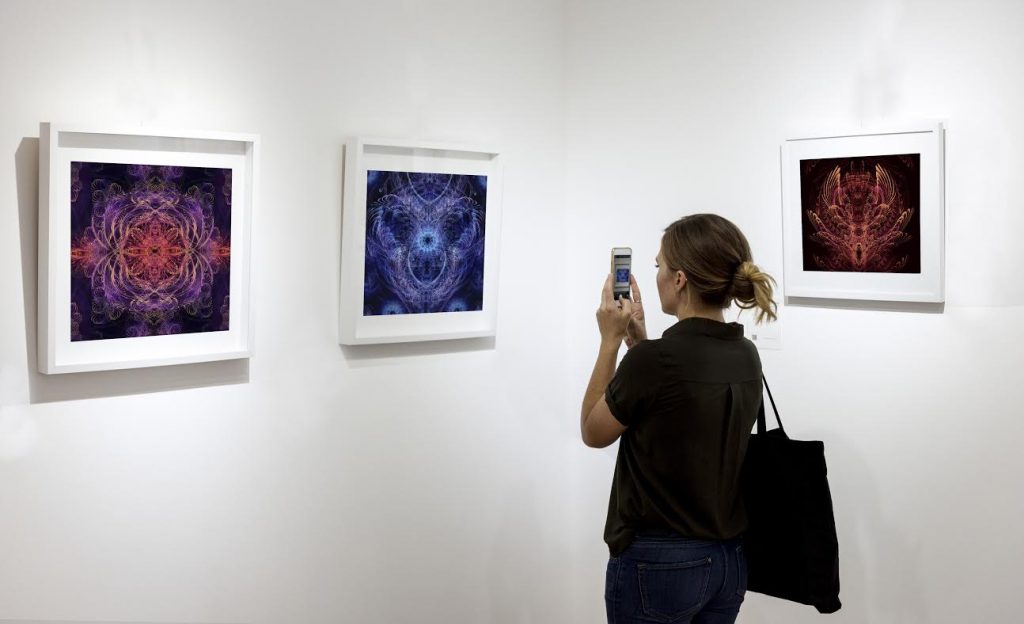
Glossary
International Student: SAIC defines an international student as a non-US Citizen or non-US Permanent Green Card Holder. International students usually need an F-1 (Student) visa, or J-1 Exchange Visitor visa to study in the United States.
F-1 (Student) Visa: allows foreigners to enter the United States as full-time students at an accredited college, university, seminary, conservatory, academic high school, elementary school, or other academic institution or in a language training program. International students with F-1 Visa status must be enrolled in a program or course of study that culminates in a degree, diploma, or certificate and the university or school must be authorized by the U.S. government to accept international students.
Optional Practical Training (OPT): is a subcategory of F-1 visas that allows F-1 students to stay and work in the U.S for 12 months (24 months for STEM degrees) after graduation from a degree program.
H-1B Visa: is a work permit that allows foreign workers to go to the United States and work for American companies. The foreigner must specifically work in a field that requires specialized knowledge. Please note that individuals cannot apply directly for an H-1B visa. Instead, the employer must petition for entry of the employee. The duration of stay is three years, extendable to six years; after which the visa holder may need to reapply.
O-1 Visa: for the individual who possesses extraordinary ability in the sciences, arts, education, business, or athletics, or who has a demonstrated record of extraordinary achievement in the motion picture or television industry and has been recognized nationally or internationally for those achievements.
Before applying for O-visa, the artist must have a U.S. agent or employer who will petition on the artist’s behalf, along with an immigration attorney’s help to convey and prove the artist’s extraordinary ability, such as awards and publicity. The attorney is responsible for compiling a completed visa application, which includes an attorney cover letter, a letter from the petitioner, an I-129 form, background information and passport biographical data for the artist, a detailed evidence list, exhibits, consultation letters, deal memos, and an itinerary of engagements. After the application materials are complete, the petitioners may finally submit the application to the United States Citizenship and Immigration Services (USCIS) for consideration. The USIC’s role is to consider the application in its entirety to determine whether the performer or artist proves his or her extraordinary ability.

Following an overview of Mac’s thesis, Iacoponi conducted an interview with Mac over email. Here is the result of that interview edited for clarity:
Lauren Iacoponi: What inspired your research and thesis at SAIC?
My Linh Mac: During my years as a student-teacher, I was inspired by two primary teaching philosophies. The first philosophy is that it is our job as educators to care about students’ well-being. This includes having compassion and patience to help students overcome any disadvantages or obstacles (such as financial and emotional struggles, disabilities, and inequality or privilege based on their racial and national backgrounds, etc.) that stand in the way of their learning journey and success. The second philosophy is the term “their success is our success,” where a student’s success in learning also means the teacher’s success in educating. However, if students only succeed in understanding concepts without knowing how to incorporate this knowledge into practice, our teaching is only half successful. It is my firm belief that art institutions should aid international students in establishing their art careers even after they graduate.
LI: How is your experience different from domestic career artists and art educators?
MM: It is different from the very beginning. International students have to overcome so many challenges with language barriers, cultural differences, and homesickness. I still remember how little I felt as a freshman in college when it came to academic performance. It took me a few days to finish a 5-page essay because English is not my first language. My domestic classmates could accomplish coursework in a much shorter time frame. This has nothing to do with my English efficiency level because all F-1 students must pass a standard English test like IELT, or TOEFL, on top of passing the SATs before receiving F-1 status. In my case, assignments took me longer because I think in my native language. I spoke British-English and Australian-English for years before college, but I still struggled with phrases and wording with American-English.
Also, as F-1 students, it is illegal for us to work off-campus, so we had to compete with domestic students for the same on-campus jobs. And of course, since we cannot work more than 20 hours a week, we cannot afford to support ourselves with student salaries unless granted a full-ride or we are fortunate to have financial support from our families.
Personally, the most unfair part of being an international student is if we decide to pursue a career in the U.S. under a different visa status post-F-1, we are expected to figure everything out on our own. This entails finding employment immediately after graduating to gain experience and becoming a professional within the field in less than a year during our Optional Practical Training (OPT) period. Imagine how out of place, overwhelmed, and lost you feel after graduating from college while trying to figure out what’s next? I felt that, but with ten times the amount of pressure because I don’t have family in Chicago or relatives to network with, rely on, or help me find an entry-level position, let alone a dominant one that offers sponsorship with so little time.
LI: What are the disadvantages of your pending visa status? Are there any advantages to being an international artist applying for an O-1 Visa?
MM: One of the worst experiences I’ve had applying for jobs is when they ask either on the application or during an interview: Do you require authorization and sponsorship in the future? As soon as I respond “yes,” I am automatically turned down, no matter how qualified I am for the position. It’s upsetting, but I can’t blame them either because if I were in their shoes, I would not risk investing thousands of dollars to sponsor an entry-level candidate with no work experience beyond the school they just graduated from. The system is flawed.

LI: Have you attended workshops or events geared towards F-1 artists held by SAIC or Columbia College? Any other programming within city limits? What can we do better?
MM: Yes. I attended one workshop hosted by SAIC and one by Columbia College Chicago (aside from the two I co-hosted at SAIC in 2019). Both SAIC and Columbia’s workshops were similar in terms of structure, the attorneys do all of the talking and go over each visa category individually. I still think it is too condensed and overwhelming for students to process all of the information in just 1-2 hour sessions. Also, I’m not a fan of how late into the school year these workshops are introduced and how only seniors and students who have less than half a year of OPT are invited to attend. Most of the students were freaking out about how little time they had left to plan their post-F-1 alternatives and how unprepared they were.
The value I found in these events is dependent on the resourcefulness of the attorney attending the workshops. To do better—curate different attorneys of varying specialties. Attorneys with specialties in every visa category. And do not wait until the Spring semester to host it. Because it doesn’t give students a lot of time to prepare for the application process (such as budget/finance planning for attorney fees, which cost up to a few thousand dollars). Providing networking opportunities with sponsoring agents is crucially important as well. There’s so much planning that goes into the application process, and I doubt very much that universities are aware of how involved the process is.
If I had the authority as a professor at a higher education institution, I would create a new professional practice curriculum based on the workshop I launched two years ago at SAIC but expand it to be more in-depth. It would be great to have this kind of resource officially available to F-1 artists as an elective class. It can be a full-semester course that meets every 2-3 weeks to follow up with students’ progress with portfolio/profile-building and industry research. I also think university career centers should help students connect with sponsoring agents and introduce the concept of mentorship/apprenticeship with field experts at executive levels. It is always helpful to have mentors aside from professors to help students transition and adapt to real-life professional standards. Because an A + school project can be a C- or a D in real life, a portfolio filled with class projects might get you an entry-level position but not a sponsored position.
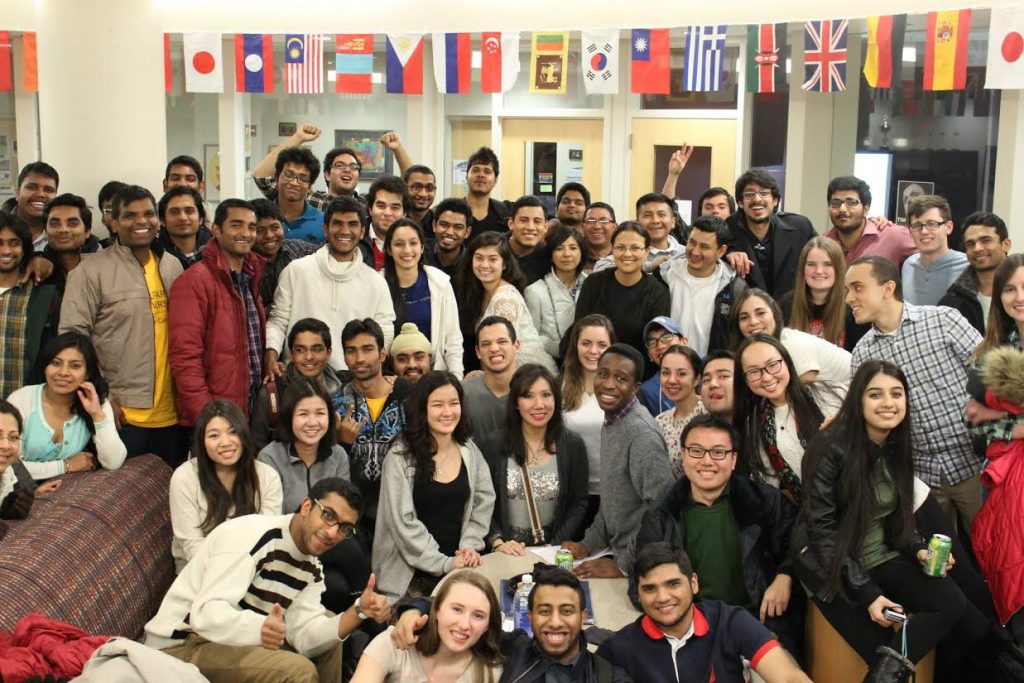
LI: Have you had to turn down freelance opportunities for pay?
MM: Yes, in addition to restrictions on my work visa, I usually turn down opportunities for three main reasons: 1) Not enough transparency in creative control, 2) Indecisive clients, 3) Difference in work ethic. Meaning, I don’t settle for copying ideas and work that already exists. I want to contribute my own vision to projects and work outside the box.
LI: Can you speak on the hours you’ve spent applying to competitions, exhibitions, and other portfolio-building applications to prove yourself as an “extraordinary” candidate for visa sponsorship?
MM: I work on it every day. It’s pretty much full-time if I add up the hours I spend on researching, planning my calendar/timeline to stay on top of deadlines, creating new projects, and various consultations with my attorney and other creatives. I only have six months to prepare/file my O-1 case. Giving 200 percent of my effort is the only way to succeed in what I call my “profile-building boot camp.”

LI: What is the emotional and psychological toll of applying for your O-1 Visa?
MM: The entire experience has been an emotional rollercoaster. I’m constantly haunted by the fear that I’ll run out of time. I’ve spent countless nights anxiously replaying the “what-if” scenario of possible rejections, then bounce back with positive thoughts that hard work will be rewarded. I’m lucky to have good support systems from my family and friends as well.
LI: Do you ever find yourself creating work specifically within a medium to fit an open call? What are some of the artworks inspired by these open calls?
MM: I sometimes make artwork specifically for an open call, but it also has to be tailored into a topic that really engages me. For my series “Artificial Dose,” I chose a digital medium because there were lots of open calls online for digital artwork at that time. The context came from thoughts about Western culture concerning my heritage that was unrelated to the open call entry. So it’s 50/50, directed by the call for digital art, but about topics and issues I am currently engaged within my studio practice. The series originally came from a reflection on traditional values that fade away in the modern, industrialized American lifestyle. Racism and discrimination against Asian people have pushed me to create more works that demonstrate the cultural values of my Asian heritage. Now, with Asian hate crimes peaking, I imagine we will see more exhibitions and art practices related to the new/rising anti-racist movement #StopAsianHate (similar to #BLM in 2020).

LI: You published an incredible children’s book, “The First King,” with your partner early this year. Can you tell me a little about the collaboration? How did you find time to design and write the story?
MM: It began last June after the success of my Vietnamese coffee branding project. I decided to pursue another venture related to my culture. At first, I wanted to do a short 2D illustration project on Vietnam’s origin story as a break from my work on the O-1 petition. But after finishing the second page, something did not feel right. My gut told me to start over again with a different medium. Since the story plays a big part in my childhood, I decided to create imagery using my favorite childhood medium, hand-cut paper. I decided to go back to pen, markers, and colored paper. I re-began the project in late December last year. Each page took between 2-5 days to complete. Halfway through the project, my partner suggested I make it into a children’s book and publish it. I told him if he put his name on it as the writer, I would publish it, and here we are “The First King” by Hollywood’s film director-Damien Saint Jackson.

LI: Other Tips and advice for fellow F-1 artists?
MM: Yes, I have quite a few to share and hope it’s helpful.
- Get your portfolio ready. Always polish up your portfolio. It’s not a one-time thing. You have to work on it constantly. Keep your CV updated and ready for new opportunities.
- I think every artist should revisit and update their website at least once a month. It’s important to treat your website and portfolio like a brand/company but don’t forget to let your audiences know you as a person as well.
- Branding and marketing your profile and artworks can be expensive, but it doesn’t have to be. You can teach yourself basic photography skills to document your work professionally. Basic photo and video editing can help you a long way! You can literally learn everything on Youtube these days for FREE.
- Keep track of your papers and certifications. Some galleries give out certificates of exhibition participation, and some don’t, but you can always ask for it. This will make your attorney’s job easier to collect evidence for your case later on.
- When asking someone to write you recommendation letters, offer to write a draft first. It will shorten the process and help the recommender include all of your good qualities and achievements.
- Take advantage of different communities available to you online, through school, and neighborhood art communities in your area – be involved. A personal tip, I ‘stalk’ other artists’ profiles and CVs to see what awards they’ve won, what their application materials were, and take advantage of this information. Reach out to fellow artists! Don’t be self-conscious. Lots of artists like to help their fellow artists, myself included.
- Never agree to pay for publications that only offer social media shoutouts. That’s a waste of money. Try finding free press outlets first, as a rule. Don’t overly rely on social media to promote your work. Reach out to journalists, do research, see if it’s right for you to submit before submitting anywhere. The same for exhibitions. Don’t apply to everything especially if there is a submission fee!
My Linh Mac’s multi-media artworks are represented by En Foco and RubberNeck Gallery in Chicago, Brauer Museum- Indiana, Queen Victoria Museum and Gallery- Australia, INTACT international- Canada, and in many private collections internationally in the United States, Italy, Germany, Hong Kong, and South Korea. Mac is a member of the National Oil and Acrylic Painting Society (NOAPS), Oil Painting of America (OAP), as well as a jury member of Creative Communication Award (C2A), Davey Award, Creativity International Award, Brightness Illustration Award, Lorenzo Il Magnifico Award & The Leonardo Da Vinci Award just to name a few.
Featured Image: Tell Me You’re Insecure, Photo Series by My Linh Mac, International Art Collaborators Network (I.N.T.A.C.) May 2019. The piece is a black and white portrait of the artist. In the photo, the artists’ image is repeated to show her in different poses, covering her eyes looking to her right, looking down with her hands behind her back. Photo courtesy of the artist.
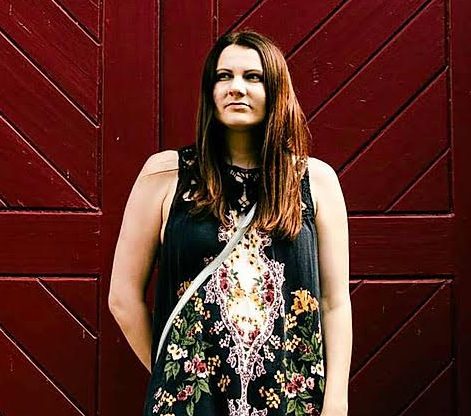
Lauren Iacoponi is an artist, curator, writer, and arts administrator living and working in Chicago, IL. Iacoponi received her MFA from Northern Illinois University with a Certificate in Art History and her BFA from Columbia College Chicago with a Minor in Art History. Iacoponi is the Director and Founder of Purple Window Gallery, an artist-led project space coming soon to Avondale and the Director and Co-founder of Unpacked Mobile Gallery.
Instagram handle:@lauren.ike

